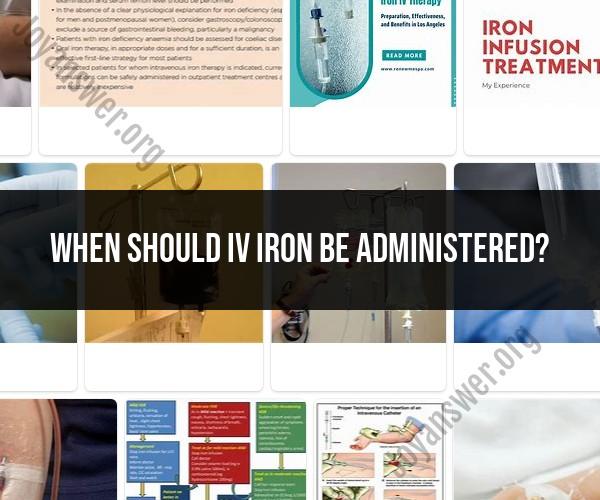When should IV iron be administered?
Intravenous (IV) iron administration is a medical procedure used to treat iron deficiency anemia when oral iron supplements are ineffective or not well tolerated. This comprehensive guide provides insights into the timing, procedure, and considerations for IV iron administration.
Introduction to IV Iron Administration
IV iron administration involves delivering iron directly into the bloodstream, bypassing the digestive system. It is commonly used to address severe iron deficiency anemia.
Indications for IV Iron
IV iron may be recommended when:
- Oral Iron Ineffectiveness: Oral supplements do not adequately improve iron levels.
- Intolerance or Absorption Issues: Some individuals may experience gastrointestinal side effects or have difficulty absorbing oral iron.
- Chronic Conditions: Certain chronic conditions may hinder iron absorption or increase iron loss.
Administration Procedure
The IV iron administration process:
- Preparation: Medical assessment and pre-screening ensure safety and suitability.
- Medical Setting: IV iron is typically administered in a healthcare facility under medical supervision.
- Catheter Insertion: A healthcare professional inserts an IV catheter into a vein, usually in the arm.
- Iron Infusion: Iron solution is slowly infused into the vein over a specified time.
- Monitoring: Vital signs and potential side effects are closely monitored during and after the infusion.
Side Effects and Precautions
Common side effects and precautions include:
- Infusion Reactions: Allergic reactions or infusion-related symptoms may occur.
- Monitoring: Regular follow-up appointments and blood tests to assess iron levels.
- Pregnancy and Breastfeeding: Consultation with a healthcare provider for guidance.
Post-Administration Care
After IV iron administration:
- Rest: Adequate rest and hydration may be advised.
- Resume Normal Activities: Most individuals can resume daily activities after the procedure.
- Follow-Up: Adhering to medical appointments and recommended treatments.
Conclusion
IV iron administration is a valuable treatment option for individuals with severe iron deficiency anemia. By understanding the indications, procedure, precautions, and post-administration care, patients can work with their healthcare providers to ensure safe and effective management of their condition.










